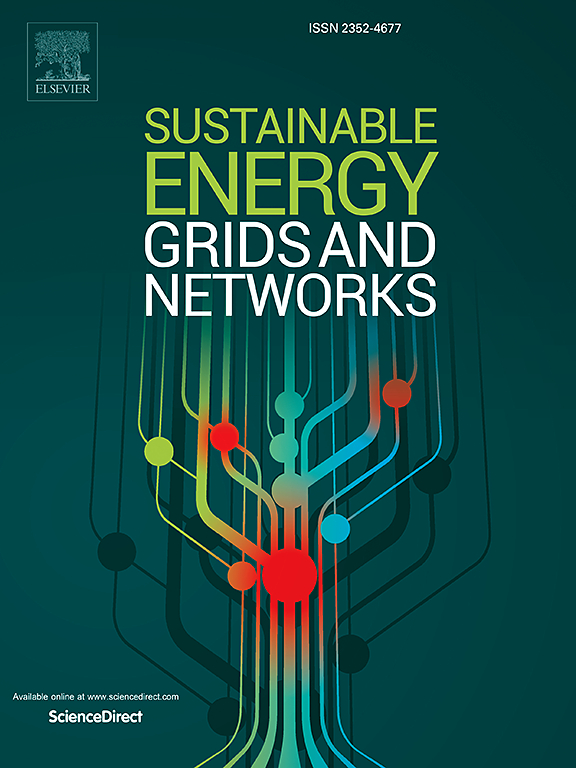考虑用户有限理性的耦合输电网快速充电负荷预测
IF 5.6
2区 工程技术
Q2 ENERGY & FUELS
引用次数: 0
摘要
随着电动汽车及其充电设施的快速发展,配电网(PDN)与交通运输网(TN)之间的耦合日益加深。随着电动汽车快速充电需求的不断增长,电力运输耦合网络(CPTN)的稳定运行受到影响。因此,准确预测电动汽车快速充电负荷至关重要。针对传统充电负荷预测模型未充分考虑交通流特征和用户行为的局限性,提出了一种考虑用户有限理性的CPTN电动汽车快速充电负荷预测模型。采用宏观交通流模型来捕捉TN内的拥堵动态,从而更真实地预测交通流演变。此外,建立了充电站动态模型,模拟了充电站的充电和排队行为,得到了充电负荷的时空分布。微观用户行为决策模型考虑了同时的路线和出发时间选择,反映了用户群体之间的非合作博弈行为,并将用户的有限理性量化为用户对出行成本的容忍度,从而得到更准确的均衡流。该模型考虑了用户的有限理性,大大减少了迭代次数,提高了计算效率和求解质量。仿真结果验证了所提模型和算法的有效性,强调了考虑交通拥堵特征和用户有限理性的必要性。本文章由计算机程序翻译,如有差异,请以英文原文为准。
Prediction of fast charging load in coupled power-transportation network considering users’ bounded rationality
With the rapid development of electric vehicles (EVs) and their charging facilities, the coupling between the power distribution network (PDN) and the transportation network (TN) has been deepening. The increasing demand for fast charging of EVs can impact the stable operation of the coupled power and transportation network (CPTN). Therefore, accurate prediction of EV fast charging loads is crucial. In light of the limitations of traditional charging load prediction models that fail to fully consider traffic flow characteristics and user behavior, this paper proposes an EV fast charging load prediction model in CPTN considering users’ bounded rationality. A macro traffic flow model is employed to capture congestion dynamics within the TN, enabling a more realistic forecasting of traffic flow evolution. Additionally, a charging station dynamics model is developed to simulate the charging and queuing behaviors at charging stations, yielding the spatiotemporal distribution of charging loads. The micro user behavior decision model accounts for simultaneous route and departure time choices, reflecting the non-cooperative game behavior among user groups, and quantifies users’ bounded rationality as their tolerance for travel costs, leading to a more accurate equilibrium flow. By considering users’ bounded rationality, the model significantly reduces the iteration count, enhancing both computational efficiency and solution quality. Simulation results validate the effectiveness of the proposed model and algorithm, underscoring the necessity of accounting for traffic congestion characteristics and users’ bounded rationality.
求助全文
通过发布文献求助,成功后即可免费获取论文全文。
去求助
来源期刊

Sustainable Energy Grids & Networks
Energy-Energy Engineering and Power Technology
CiteScore
7.90
自引率
13.00%
发文量
206
审稿时长
49 days
期刊介绍:
Sustainable Energy, Grids and Networks (SEGAN)is an international peer-reviewed publication for theoretical and applied research dealing with energy, information grids and power networks, including smart grids from super to micro grid scales. SEGAN welcomes papers describing fundamental advances in mathematical, statistical or computational methods with application to power and energy systems, as well as papers on applications, computation and modeling in the areas of electrical and energy systems with coupled information and communication technologies.
 求助内容:
求助内容: 应助结果提醒方式:
应助结果提醒方式:


